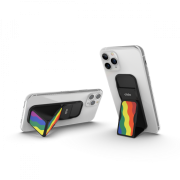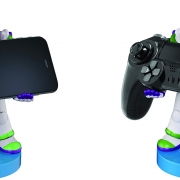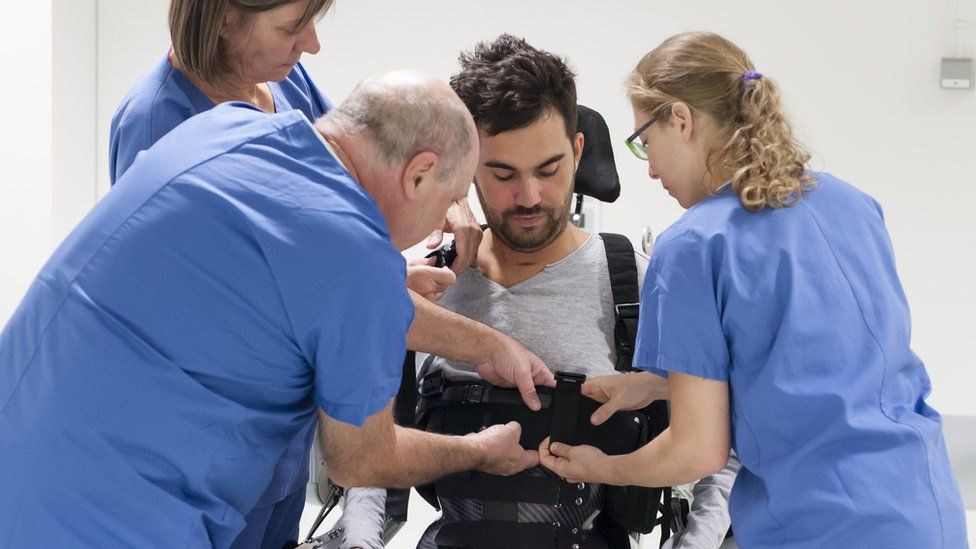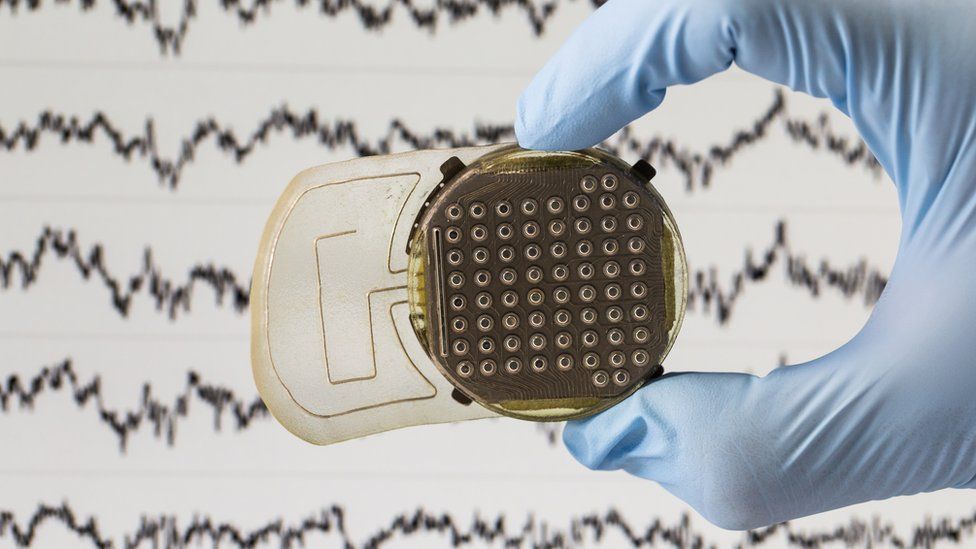Thanksgiving is TODAY! Thanksgiving is known for Turkey and we thought we would share a piece from another tech outlet inside.com, who have run down the Top 10 Virtual Turkeys of yesteryear. What is that I hear you ask? Well it’s pieces of tech that have flunked over the years, otherwise known as a Turkey!
Enjoy!
This piece originally appeared in a newsletter from inside.com [InsideAR Nov.27th 2019] and was written by Alice Bonasio
Alice Bonasio is a journalist and consultant obsessed with the immersive technology space, including AR/VR/MR/XR and any other acronyms that fit into the realities spectrum. Over the past 15 years, Alice has advised a wide range of start-ups and corporations on digital transformation and communication strategy and is the Founder and Editor-in-Chief of Tech Trends. She also regularly contributes to publications such as Quartz, Fast Company, Wired, Playboy, The Next Web, Ars Technica, VRScout and many others.
Top 10 Virtual Turkeys – Thanksgiving 2019
10.
The Nintendo Virtual Boy is widely considered one of the company’s greatest failures. Yet it has also become a cult object! Learning a bit more about it also provides us with useful context on how the company has approached its latest (and much better received) efforts with the Nintendo Labo VR. So while the console itself has been a failure. It was also ahead of its time in many respects. With the technology developed by Nintendo has since been incorporated into many of its products to this day. And should you come across one at a garage sale somewhere, snap it up quickly! As fewer than 800,000 units were made worldwide, making it a valuable collector’s item.

Dissecting the Turkey
The Virtual Boy was is a 32-bit table-top video game console touted as the first of its kind to offer stereoscopic 3D graphics. That promised to totally immerse the players in their own private universe. Content fell well short of expectations, however, with only 22 games ever being released for the system. (A problem arguably still plaguing VR today) At the time of its release in 1995, Nintendo of America projected hardware sales of 1.5 million units and software sales numbering 2.5 million by the end of the year. Nintendo had shipped 350,000 units of the Virtual Boy by December 1995. Around three and a half months after its North American release. Panned by critics and plagued by health and safety concerns, sales fell well short of expectations and production ceased by early 1996.
The Virtual Boy created an illusion of depth through the effect known as parallax. In a manner similar to using a head-mounted display, the user looks into an eyepiece made of neoprene on the front of the machine. Then an eyeglass-style projector allows viewing of the monochromatic (in this case, red) image. Nintendo claimed that a color display would have made the system too expensive and resulted in “jumpy” images. So the company opted for a monochrome display.
9.
Morton Heilig was known as the father of virtual reality, and for good reason. His Sensorama machine, which he patented in 1962, is one of the earliest examples of multimodal technology. Heilig was a multimedia creator in a time when the term hadn’t yet been invented. His concept of multi-sensory theater-like experiences was laid out in his 1955 paper The Cinema of the Future. Where he talks about being inspired by the concept of “feelies”. Movies enhanced with sensory elements. Imagined in Aldous Huxley’s seminal Science Fiction tale Brave New World.
It’s probably fair to say that Heilig was ahead of his time. As he never did get funding to take his design into commercial production, so eventually abandoned it. Heilig died in 1997, yet his website – which bizarrely still says it’s “under construction” lists the Sensorama machine for sale to a serious collector or museum. The reported price tag on this piece of VR history is $1.5 million.

Dissecting the Turkey
He went on to build the Sensorama prototype to showcase that concept in practice. To experience a two-minute immersive experience, the user would insert a token, straddle a bucket seat, grasp a pair of handles, and place their eyes on viewing holes (safe in the knowledge that the clever design even incorporated UV lights that sterilized the equipment after each use) surrounded by vents.
There were five films to choose from, all shot by Heilig himself using a 3D camera he also invented and built from scratch, which filmed side-by-side 35mm simultaneously, had capacity for two 400 ft magazines, and yet was small enough to be used as a hand-held device. Intriguing titles included Belly Dancer, Dune Buggy, and, I’m a Coca-Cola Bottle. In Motorcycle, the simulation took you for a ride through New York as you felt the wind on your face, heard the noises of the city, and even smelt the food in the snack shops and the exhaust from the bus in front of you.
8.
It seems strange to call something that happened just five years ago a “throwback,” but if tech time works like dog-years, in the immersive space things can move so fast it can feel more like fly-years. So as I cast my mind back when I first unwrapped my Samsung Gear VR and plugged what now seems like a very old and clunky phone on its front, it seems like another world from the sleek experience I can get from an Oculus quest for not that much more money.
This is why we’ve seen such a sharp fall in demand for mobile VR. Which finally caused Samsung to drop support for the Gear VR on its latest Samsung Galaxy models. Although it held on as long as it could. Yet the fact we seem to be moving on from mobile VR shouldn’t make us overlook the contribution that the format. The Samsung Gear VR in particular – have had on the ecosystem. Although far from perfect, the price point and accessibility they offered bridged the gap between the ultra-basic cardboard introductions to the medium and the full-blown setups required by the HTC VIVE and Oculus Rift. There are still not many VR devices out there that can claim to have been sold out on the day of their release.
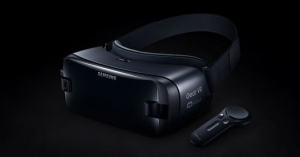
Dissecting the Turkey
The Samsung Gear VR was developed as a collaboration between Samsung and Oculus. Although the Samsung Gear VR consumer edition was released in November 2015. Samsung had obtained a patent in 2005 detailing the use of a mobile phone as the display for an HMD. However, mobile phone technology at the time limited the degree of quality and performance possible. Samsung continued to research VR and HMD internally.
When in use, a compatible Samsung Galaxy device acts as the headset’s display and processor. While the Gear VR unit itself acts as the controller, which contains the field of view. As well as a custom Inertial Measurement Unit (IMU) for rotational tracking, which connects to the smartphone via USB-C or micro-USB. The Gear VR headset also includes a touchpad and back button on the side, as well as a proximity sensor to detect when the headset is on.
7.
Thirty-three years ago the National Film Board of Canada commissioned a production called Transitions to be showcased at the country’s Expo 86 in Vancouver, the first-ever IMAX presentation using polarized glasses. It was also the first full-color 3D IMAX film. In an article published in The Province newspaper in June 1986, film critic Michael Walsh described how the experience was sure to be “every small child’s single most treasured memory of Expo 86”
So perhaps when we look at the past five years or so since this latest wave of enthusiasm for immersive technologies has started. It is useful to ponder on how long the technology has been enthusing people for
The difference now is that they no longer need an IMAX setup to do so. Although a portmanteau of random special effects would probably not be enough to keep audiences interested for long nowadays. Walsh’s experience also demonstrates how engaging content is key to getting people to embrace it.

Dissecting the Turkey
From a fixed position, McNabb’s camera puts dressed lumber, a gymnast and that wonderful teddy bear within our apparent reach. Parallel tracking shots follow voyageur canoes along a wilderness river and a historic steam locomotive across the country. When McNabb tracks forward, the audience drives down a rural road behind a vintage automobile. Trots around a track just inches ahead of a harness racehorse and, briefly, sits astride a speeding motorcycle.”
6.
The Forte VFX1 Headset was the most advanced, complex and expensive consumer VR system. That appeared on the market during the mid-1990s VR craze. It was released in 1995 and cost about $599. It comprised a helmet, a handheld controller, and an ISA interface board. For those keen on indulging in some retro gaming, you can still occasionally find operational headsets for sale. One sold on eBay recently for $240! There is a surprising amount of content available for it, including classic games such as Duke Nukem 3D.

Dissecting the Turkey
The helmet – which in looks and functionality comes pretty close to what was portrayed in the 1992 classic “Lawnmower Man”. Featured Two Degrees of Freedom (2DOF). Head tracking with internal sensors for pitch (70 degrees). Roll (70 degrees), and yaw (360 degrees) in addition to stereoscopic 3D and stereo audio.
It even had cool features which we see in modern VR headsets. Such as a “smart visor” that could be opened to allow the user to look at the outside world. Without taking off the whole thing. The visuals, which by all accounts were very impressive for the time. Were delivered by dual 0.7″ 263 x 230 LCD displays capable of 256 colors. Optics comprised dual lenses with adjustable focus and interpupillary distance, with a 45-degree diagonal Field of View (FOV). The helmet also included built-in stereo speakers and a condenser microphone.
A hand-held controller called the Cyberpuck offered three buttons and internal sensors for pitch and roll. Audio, video, and tracking information was transmitted via the VIP Board. A 16-bit ISA card that received video input from the video card’s 26-pin VESA feature connector. Making this complex setup work was not for the faint-hearted though. As it required a lot of calibrating and setup with good old MS-DOS. For starters, the system’s “VIP” card needed to be installed into an ISA slot of the host PC. This worked together with the PC’s video-card connected via VESA bus to provide stereoscopic imagery on both screens of the HMD.
5.
After Nintendo Labo announced the release of its VR software system, which includes a cardboard headset brings to mind some of the similar formats that populated our childhood experiences, such as the View-Master. Though the View-Master wasn’t technically considered virtual or augmented reality. The 3-D stereoscope film reels of everything from planets in the solar system to movements of dinosaurs captured my attention with each flick of the plastic lever.

Dissecting the Turkey
Originally created in 1939, the View-Master quickly became popular for looking at high-quality images of tourist destinations. Shortly after the advent of color photographs. After going through a few iterations and discoveries of practical uses. The View-Master ultimately became visual entertainment for children.
As a way to stay modern with the times. View-Master traded in its iconic film reel for and SDK to create the View-Master Virtual Reality Viewer. Though View-Master is doing what it must to continue providing visual stimulation to children. I will never forget how important the View-Master was to my childhood.
4.
As far as I’m concerned, 2016 was a pretty good year for VR. People were starting to get really excited about the technology and some significant advances were being made, and I wrote my first article about VR Porn for Playboy. But it was also the end of an era. As Disney announced that it would be closing down its pioneering Indoor Interactive Theme Park, DisneyQuest. It was a relatively early proof of concept as to the appetite for location-based VR entertainment. Something that companies like The VOID are now reviving in a big way.
Not only that, but DisneyQuest was also the launchpad for many prominent careers in the immersive field. As those who worked for the company are still shaping the industry ecosystem. Case-in-point being Avi Bar-Zeev, who after working for them in the 90s moved to Microsoft and then Apple. Where he was rumored to be involved in the development of their AR glasses.

Dissecting the Turkey
Originally opened in 1998, the Orlando five-story indoor interactive theme park cost an estimated $90 million. Boasting (for the time) cutting edge computer graphics and HMDs.
Multi-sensory rides such as “Aladdin’s Magic Carpet” and “Ride the Comix” proved really popular for years. But by the end of the ’90s it was suffering from a lack of investment. Before finally closing its doors permanently and making way for a new attraction on July 3, 2017.
3.
Most people associate Morton Heilig with the iconic Sensorama machine. Yet he invented something even before then. Eight years before the Sword of Damocles which is widely credited with being the first-ever VR headset. Yet in 1960 Heilig patented yet another pioneering VR invention: The Telesphere Mask, which to me looks much like an aluminum version of the Gear VR. And in a very real way, it actually was. The only real difference is that instead of connecting to a yet-to-be-invented smartphone. It linked to miniaturized TV tubes.
Heilig describes it in the patent filing as “a telescopic television apparatus for individual use where the spectator is given a complete sensation of reality, i.e. moving three-dimensional images which may be in color, with 100% peripheral vision, binaural sound, scents, and air breezes.”
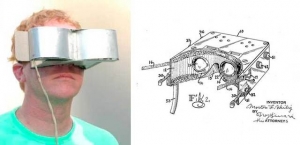
Dissecting the Turkey
The amazing device was (unlike the Sword of Damocles) light enough to wear on your head. With adjustable ear and eye fixings. Like Sensorama, the mask proved a commercial failure way ahead of its time. Even as the second coming of VR dawned in 2016. It remained an obscure footnote in the history of immersive tech. Morton’s widow, Marianne Heilig, repeatedly tried to donate the historic piece to a museum that would display it. But was flatly rejected by places such as the Hollywood Museum even when she offered it for free.
In an interview for Tech Radar back in 2016 she said the whole thing made her feel very sad and demoralized: “I’ve almost given up on this whole thing, but I’m not just going to give it away after a lifetime of struggle. I’m still working just to pay interest on the debt because I refuse to go bankrupt,” she told Holly Brockwell at the time
2.
While 3D cinema is still a thing, especially in Asia. Major manufacturers such as Samsung have pulled 3D TV from their offering. Signaling the demise of the once-promising format. Given the fact that a lot of the companies involved in developing these 3D display technologies, are also involved in making AR/VR headsets. We are also likely to see some of the key innovations “recycled” into new products.
It is difficult to envisage a future where we are still buying giant screens to put into our homes for much longer. However, when displays are already emerging that allow for high-resolution immersive content to be consumed anytime, anywhere.

Dissecting the Turkey
The buzz around 3D TV hit its peak around 2010. With companies hailing its immersive powers as the future of entertainment. The fact that all that investment has turned into one massive flop. Certainly fuels arguments for VR naysayers who are keen to draw parallels between the two.
There are certainly some lessons to be learned around the fact that no matter how cool a technology might be. If it doesn’t hit a sweet spot between practicality, price, and compelling content. It won’t snare consumers! Certainly not in the numbers needed to make it “the next big thing.”
However, the straight-up comparison is rather unfair if we look at the broader spectrum of immersive technology! (i.e. XR and Spatial Computing rather than narrower AR/VR applications) as opposed to 3D TV’s very narrow utility scope.
1.
Back in the early 90s, Sega attempted to get into VR. In a very similar way in which Sony has done with the PSVR. Building peripheral virtual reality hardware for its most popular console. But things did not go well for the gaming giant. The Sega Genesis VR headset was a gigantic flop that never even got a proper release.
Given that this all happened 26 years ago! (Don’t know about you. But as someone who can still clearly remember losing myself in those Mega Drive games. That makes me feel old). It does put into perspective just how far things have advanced over the past few years. There’s no doubt that for anybody who bothers to look into the history of VR. That it’s a slow burner with plenty of pitfalls that will trip even the mightiest companies.

Dissecting the Turkey
So what went so terribly wrong? In 1991 Sega began development on a home VR headset, the Virtua VR, which was later rebranded as Sega VR. The company introduced the headset – with its rather sleek (in a retro sort of way). Wrap-around-glasses design – at the 1993 Consumer Electronics Show. With an announced target price of $200. It got broadly covered in the press. Becoming one of the most eagerly anticipated holiday product releases of the year.
Yet when it came to testing the device in action. There were severe problems with it causing widespread motion sickness. Something that the VR industry has been working hard to address even to this day. In the end, it seems to have been a classic case of PR panic! That caused the company to simply cut its losses and pull the plug on the release of the Sega VR. Some of the technology developed was eventually repurposed onto the company’s arcade machines. But it certainly steered clear of the consumer VR market since.
Keep up to date with everything How To Kill An Hour by signing up to our newsletter by clicking here!
Let us know what you think of the show by clicking here!
Click here to subscribe to our YouTube Channel to see more amazing ways to kill time!
Follow us on Twitch by clicking here!




